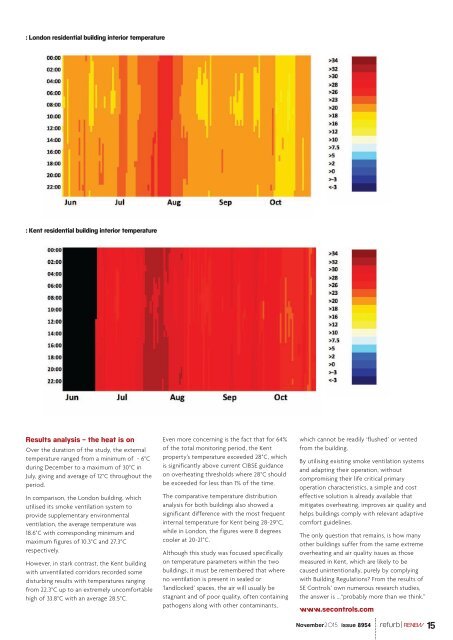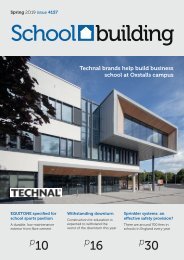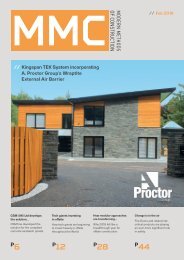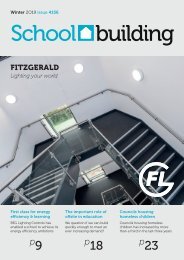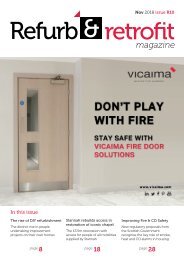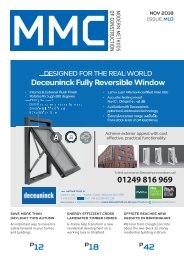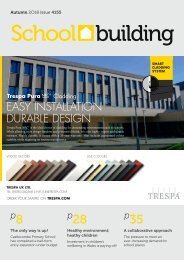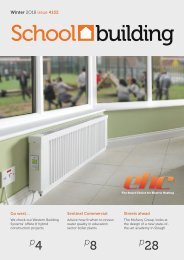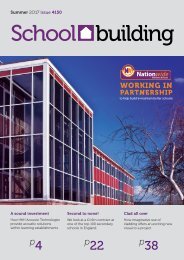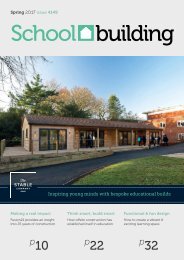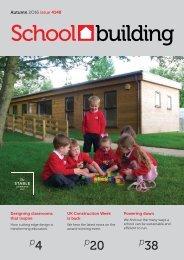R&R 8954 52 Nov '15 cc
You also want an ePaper? Increase the reach of your titles
YUMPU automatically turns print PDFs into web optimized ePapers that Google loves.
: London residential building interior temperature<br />
: Kent residential building interior temperature<br />
Results analysis – the heat is on<br />
Over the duration of the study, the external<br />
temperature ranged from a minimum of - 6°C<br />
during December to a maximum of 30°C in<br />
July, giving and average of 12°C throughout the<br />
period.<br />
In comparison, the London building, which<br />
utilised its smoke ventilation system to<br />
provide supplementary environmental<br />
ventilation, the average temperature was<br />
18.6°C with corresponding minimum and<br />
maximum figures of 10.3°C and 27.3°C<br />
respectively.<br />
However, in stark contrast, the Kent building<br />
with unventilated corridors recorded some<br />
disturbing results with temperatures ranging<br />
from 22.3°C up to an extremely uncomfortable<br />
high of 33.8°C with an average 28.5°C.<br />
Even more concerning is the fact that for 64%<br />
of the total monitoring period, the Kent<br />
property’s temperature exceeded 28°C, which<br />
is significantly above current CIBSE guidance<br />
on overheating thresholds where 28°C should<br />
be exceeded for less than 1% of the time.<br />
The comparative temperature distribution<br />
analysis for both buildings also showed a<br />
significant difference with the most frequent<br />
internal temperature for Kent being 28-29°C,<br />
while in London, the figures were 8 degrees<br />
cooler at 20-21°C.<br />
Although this study was focused specifically<br />
on temperature parameters within the two<br />
buildings, it must be remembered that where<br />
no ventilation is present in sealed or<br />
‘landlocked’ spaces, the air will usually be<br />
stagnant and of poor quality, often containing<br />
pathogens along with other contaminants,<br />
which cannot be readily ‘flushed’ or vented<br />
from the building.<br />
By utilising existing smoke ventilation systems<br />
and adapting their operation, without<br />
compromising their life critical primary<br />
operation characteristics, a simple and cost<br />
effective solution is already available that<br />
mitigates overheating, improves air quality and<br />
helps buildings comply with relevant adaptive<br />
comfort guidelines.<br />
The only question that remains, is how many<br />
other buildings suffer from the same extreme<br />
overheating and air quality issues as those<br />
measured in Kent, which are likely to be<br />
caused unintentionally, purely by complying<br />
with Building Regulations? From the results of<br />
SE Controls’ own numerous research studies,<br />
the answer is ...“probably more than we think.”<br />
www.secontrols.com<br />
<strong>Nov</strong>ember2O15 issue <strong>8954</strong> refurb| RENEW 15


